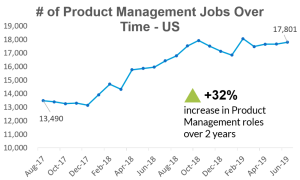By Edward Cotton
Pixar has been a poster child for corporate creativity, but it has a problem: It’s no longer producing the kind of movies that attract large audiences to theaters.
Its most recent release, Elemental, brought in only $29.5 million at its domestic box office opening the weekend of June 16. As the Financial Times noted, “Company executives acknowledged Elemental’s performance was disappointing but rejected the notion that Disney has hit a creative slump.”
Pixar invested a great deal into making this film work for the big screen—it even premiered the movie at the Cannes Film Festival. The reviews haven’t been bad. However, it’s not enough to entice people to go to the theaters.
The movie-going public appears to have become increasingly selective about what they want to see. They tend to prefer safe and predictable choices, sticking to familiar brands and franchises.
There was a time when Pixar created technologically brilliant and highly original movies that resonated with mass audiences of adults and children alike. These days, appealing to the masses has proven to be a challenge for Pixar.
The studio has remained steadfast in its commitment to the artistic vision and process, resulting in movies that cost around $200 million to produce.
Meanwhile, its competitor, Illumination, seems to have found a formula that works. The animation studio, which has been around for about 15 years, burst onto the scene with the hugely successful Despicable Me, which spawned the global phenomenon of Minions. It was also the studio behind The Super Mario Bros. Movie, which has brought in more than $1.3 billion worldwide since its opening in April.
Illumination’s approach is less sophisticated, mainly targeting kids and focusing on humor. It also produces its movies overseas, typically with a budget of around $70 million per film. Illumination excels in movie marketing, forging interesting partnerships with brands and sports properties, and leveraging social media to generate cultural buzz for its movies.
Pixar’s recent challenges may be partially attributed to Disney+ subscribers believing that they don’t need to go to the movies to see a Pixar release since it will be available for streaming. Why pay twice?
Pixar’s culture and process are designed to foster creativity and provide artists and their ideas with the best chance of success. The studio allows its artists to create highly personal films with often thoughtful and philosophical themes.
However, the issue for Pixar lies in economics. A movie with a $200 million production budget needs to be a massive hit to break even. To do that, Pixar’s artistic vision must align with content that appeals to the masses, and that doesn’t seem to be happening.
Mass audiences are not open to experimentation. They also prefer not to delve too deeply into profound subjects. Instead, they crave thrills, action, spills, and humor.
This trend may stem in part from the effects of the pandemic and the post-pandemic world. With so much turmoil happening, audiences want to really escape when they go to the movies.
They also want to immerse themselves in something familiar, which is why Illumination is currently successful. It’s also why one of the first decisions Bob Iger made upon returning to Disney was to approve the production of Toy Story 5.
Edward Cotton is a strategy consultant based in New York. He’s spent over two decades in the advertising industry working with a wide range of clients including Diageo, Apple, EA, Sony, Nestle, Unilever, BMW, Nike, Chipotle, and UNICEF.
A version of this article previously appeared on LinkedIn.
(4)








